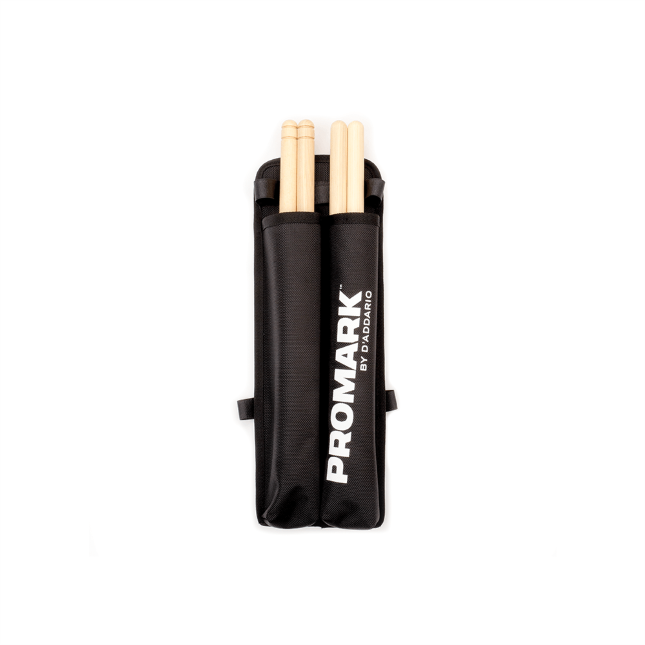Marching Percussion
Survival Guide
Between band camp, competition weekends, and late-season run-throughs, marching season can be rough on you and your gear. That’s why we created the D’Addario Marching Percussion Survival Guide: to help you stay ahead of the wear and the weather and face the season head on.
Essential Accessories
Explore our line of EVANS and ProMark marching gear, built for peak performance and designed to help you lock in, level up and lead the line.
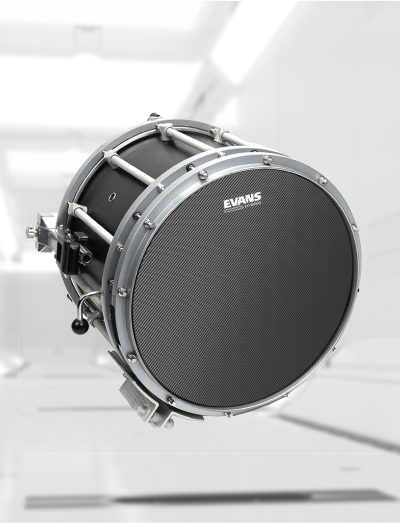
EVANS Hybrid Series Marching Snare Batter Head
Engineered for durability and a crisp, articulate sound, these high-quality snare batter heads are built to withstand the rigors of any marching performance.

EVANS System Blue Marching Tenor Head
Perfect for tenor lines seeking clarity and depth, these exceptional marching tenor heads deliver a warm, resonant tone with enhanced attack.
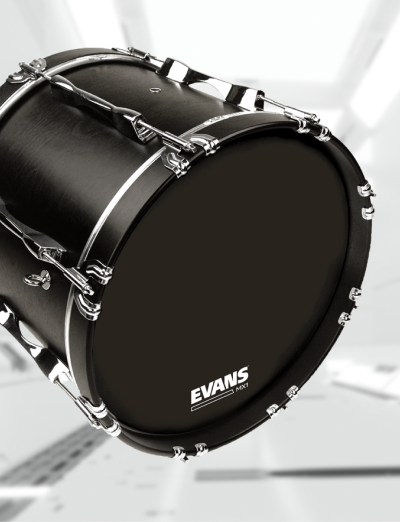
EVANS MX1 Marching Bass Drumhead
These marching heads are equipped with a unique tone damping system that enhances articulation and focuses low-end. A series of felt damping arcs can be manipulated for indoor or outdoor marching.
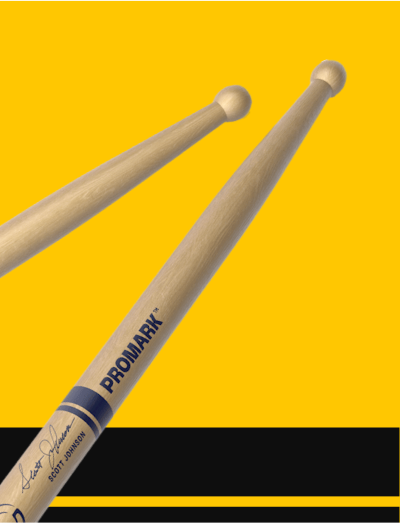
ProMark Marching Snare Drumsticks
Balanced for comfort and control, these first-rate snare drumsticks offer the durability and quick response players need for a dynamic performance.
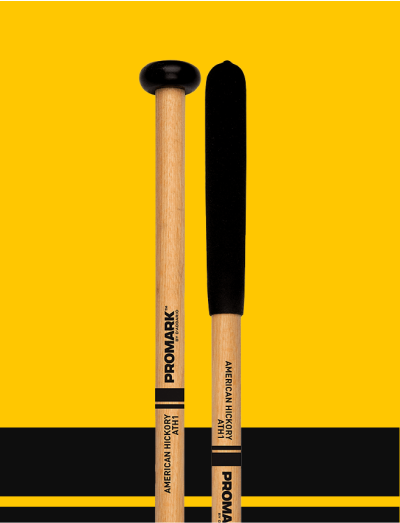
ProMark Marching Tenor Mallets
These premium tenor mallets are designed for durability and consistent tone across all tenor drums, ensuring a reliable performance.
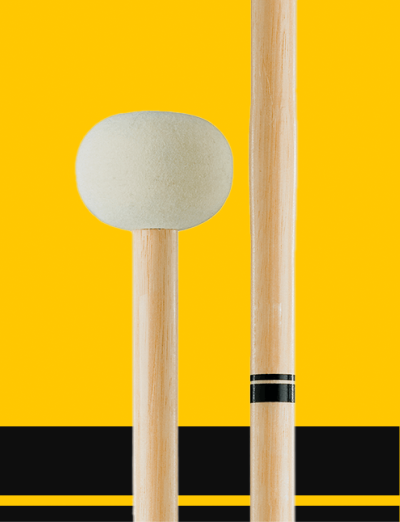
ProMark Marching Bass Drum Mallets
Crafted for power and precision, these expertly-made bass drum mallets provide the durability and punch needed for impactful bass drum parts.
Essential items like drum keys, stick bags, and maintenance tools to keep your equipment performance ready.
How To Tune Your Marching Bass Drum
1. Rest the drum on a table so you can access both heads at the same time.
2. Before mounting heads, be sure to clean rim and bearing edge of any debris.
3. Mount both heads and finger- 3 tighten lugs to equal tension.
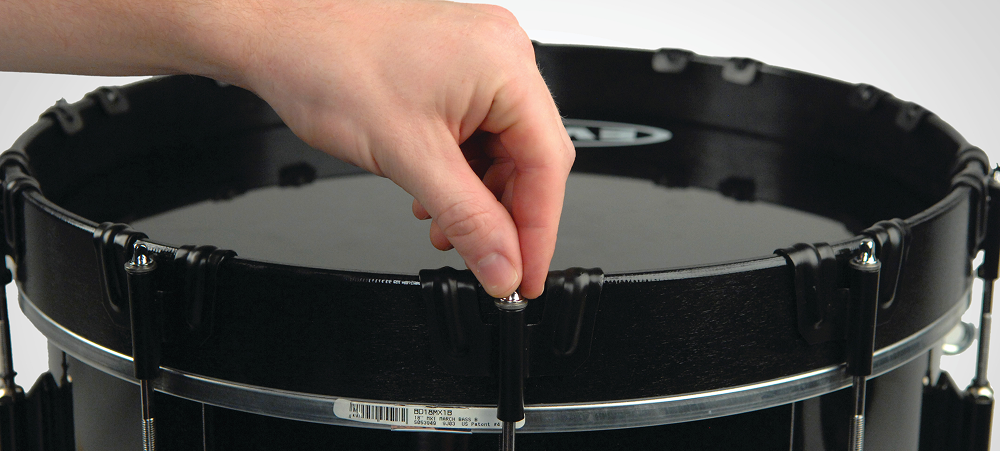
4. Starting with the largest drum, use the sequential tuning method to bring each head within its tuning range. Use a mallet to tap in front of each lug to ensure that all lugs produce an identical
clear tone.
![]()
5. Working between the two drum heads bring both heads up to the desired pitch.
6. Recheck pitch by tapping in front 6 of each lug to ensure the head is clear of overtones and in the center to ensure both heads are at the same pitch.
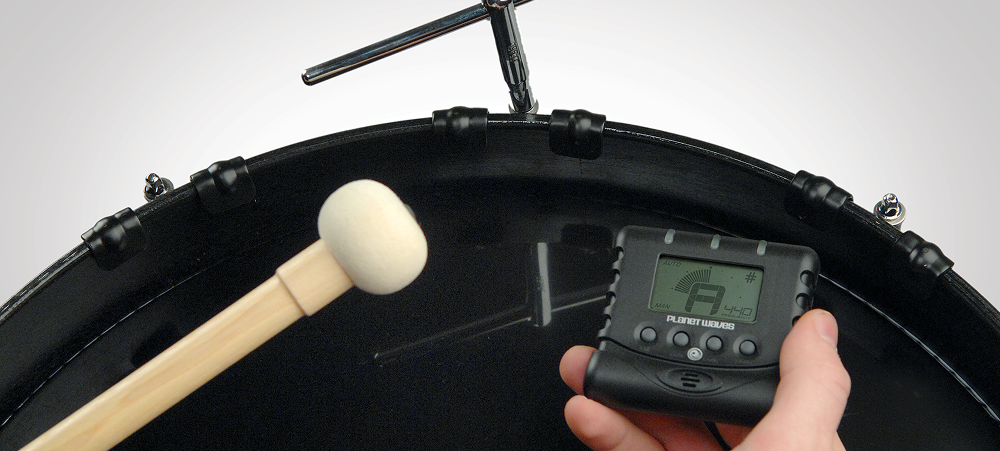
7. Once you have the largest drum tuned, follow steps 2-6 for the remaining drums. Pitch intervals between drums depend on the size of the drums used. Experiment and select a tuning scheme that provides the best balance of articulation and resonance.
Pro Tip:
It is important that the drums share a pleasing intervallic relationship with each other to enable the section to resonate together. Although the pitch of the drums will sound different, the tone should be consistent. Try to avoid a choked sound on top drums and an overly resonant lower drum.
